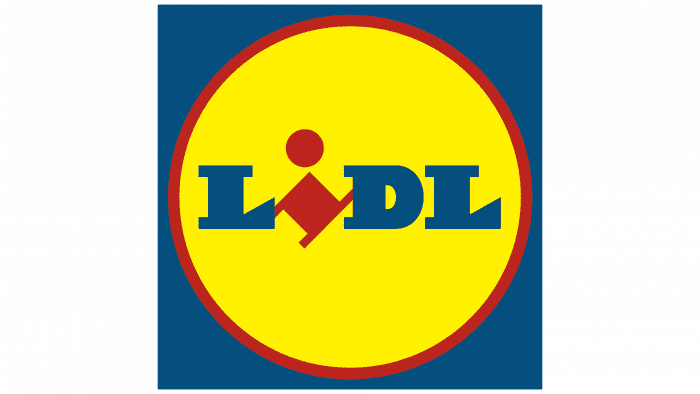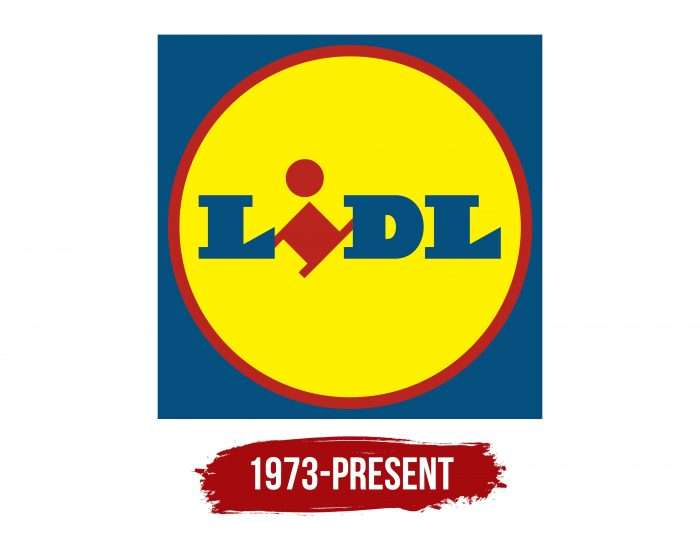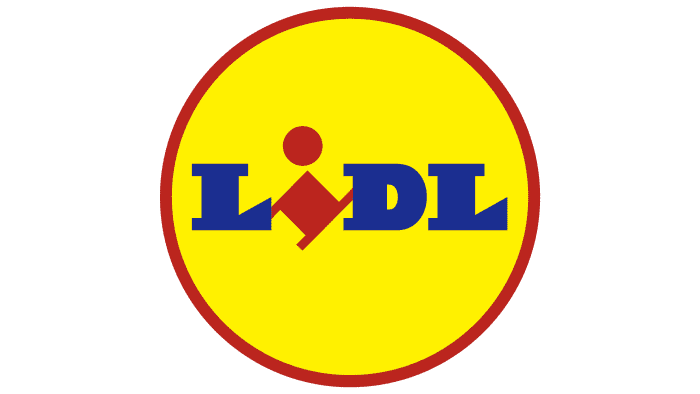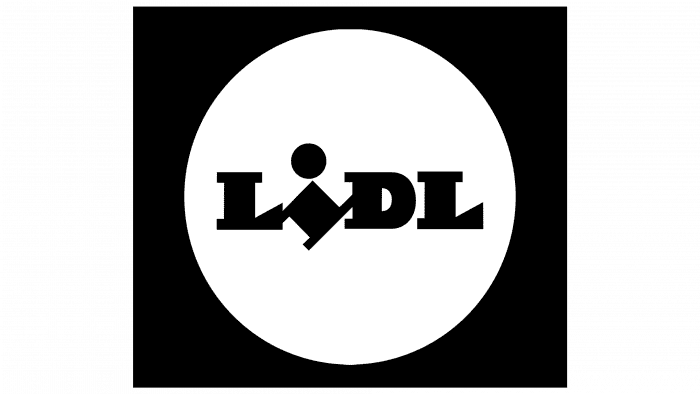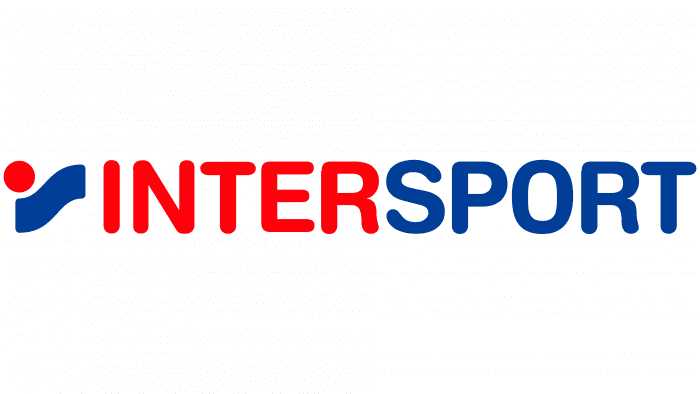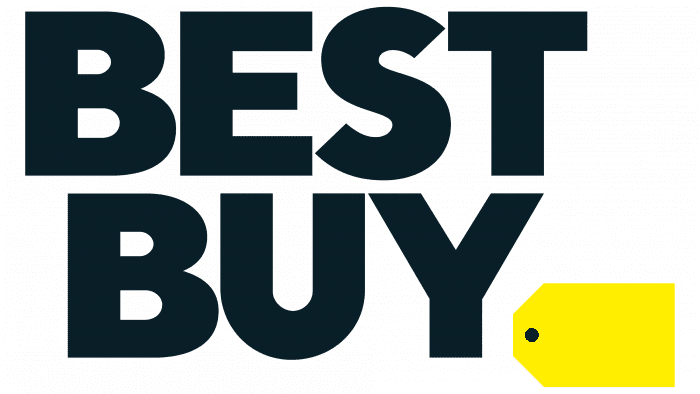The Lidl logo aligns with the corporate style found in all supermarkets of this chain. The bright logo embodies drive, positivity, and optimism because the brand aims to appear welcoming to attract customers. This is the foundation of its marketing.
Lidl: Brand overview
| Founded: | 1932 |
| Founder: | Josef Schwarz |
| Headquarters: | Neckarsulm, Germany |
| Website: | lidl.com |
Meaning and History
The company was founded in 1930 by Josef Schwarz, the owner of a small grocery store in Berlin, and his friend, economics professor Ludwig Lidl, who proposed the idea. Initially, the company was called “Lidl & Schwarz,” but they retained only the concise and resonant word LIDL, changing the spelling to uppercase. Schwarz led the business and took just ten years to position the wholesale food warehouses at the leading positions in Germany and Austria. During the war, LIDL was one of the suppliers of provisions for the army.
After Germany’s defeat, the company was liquidated, as all its assets were destroyed. However, Josef Schwarz decided to rebuild it from scratch, and within ten years, LIDL re-entered the top three among wholesale food agents.
What is Lidl?
Lidl is an international retail chain headquartered in Germany. Founded in 1973, it started as a small food store. Now, it’s one of the world’s largest discount retail chains, represented in over 30 countries. It offers various affordable goods, including electronics, kitchenware, clothing, snacks, beverages, and more.
Since 1977, the company has been divided into two segments – economic and food- and has also begun to conduct “price wars,” offering its customers prices that are always lower than competitors. Despite the economy-class prices, all goods in LIDL networks are distinguished by the highest quality.
In 1930, bright corporate colors – blue, yellow, and red, symbolizing friendliness, warmth, and reliability, were chosen for the memorable name.
At the same time, the logo was created, which remains unchanged to this day. The foundation is a blue square as a symbol of stability, quality, and reliability. Inside is a yellow circle in a red ring, symbolizing the company’s loyalty and friendliness. In the center is the brand name LIDL, executed in large blue and red letters. The lowercase letter ‘i’ is angled, visually making it even larger than the rest. Such a non-standard approach immediately attracts attention with its creativity.
The logo is bright and memorable and allows the brand to be identified at first glance. Experts assert that the LIDL emblem inspires trust and a desire to shop with them.
Lidl: Interesting Facts
Lidl, a big supermarket chain known for its great deals, started a long time ago in the 1930s in Germany. It was first a grocery wholesale business but opened its first store in 1973. Since then, Lidl has grown a lot, and now you can find its stores in over 30 countries with more than 10,000 stores.
- Starting: Josef Schwarz started Lidl as part of a wholesale grocery business, but it turned into its stores in the ’70s, and now it’s everywhere!
- All Over the Place: Lidl has stores in many countries, meaning many people shop there, not just in Germany.
- Their Own Stuff: Most of what you can buy at Lidl is made just for them. This means they can sell things cheaper but still ensure everything’s good.
- Helping the Planet: Lidl tries to be good for the environment by not wasting too much, using less plastic, and ensuring they don’t hurt the planet while doing business.
- Easy to Shop: Lidl’s stores are set up to make shopping quick and easy, and they don’t waste space, which helps keep prices down.
- Great Prices: Lidl is known for having great prices because it runs its stores smartly, saving money.
- Fun Finds: Lidl has new deals on non-grocery items like toys or clothes every week, making shopping there an adventure.
- Winning Awards: Lidl has won awards for its products, treatment of the planet, and reputation as a good workplace.
- Coming to America: In 2017, Lidl started opening stores in the US, showing they’re ready to be a big name in one of the biggest shopping markets in the world.
Lidl’s story is about growing from a small local business to a big international store chain. They’re known for low prices, caring about the environment, and always trying to improve their work.
Font and Colors
Since its inception, the logo of the well-known retail chain reflects an optimistic style, openness, and friendliness – central to the name – an inscription of three uppercase and one lowercase letter. Additionally, the developers highlighted the letter “i” with color – it’s red, while the other characters are blue. Visually, this symbol resembles a playful little man whose front part is a round dot. To emphasize this similarity, the letter is turned on its side. Then follows a yellow circle outlined by a red stripe. All elements are within a blue square.
The letters in the logo are not written but drawn, so it’s pointless to talk about a typographic font. Each character in the word is individual. They resemble fonts with serifs, but it’s impossible to identify an entirely identical variant. The “L” has a significantly raised and truncated leg end, the “D” is very wide with an almost imperceptible inner gap, and the “i” is lowercase.
The life-affirming and joyful color of the logo is created by combining red (#EE1C25), yellow (#FFF200), and blue (#015AA2) pigments.
Lidl color codes
| Medium Persian Blue | Hex color: | #015aa2 |
|---|---|---|
| RGB: | 1 90 162 | |
| CMYK: | 99 44 0 36 | |
| Pantone: | PMS 2945 C |
| Yellow Rose | Hex color: | #fff200 |
|---|---|---|
| RGB: | 255 242 0 | |
| CMYK: | 0 5 100 0 | |
| Pantone: | PMS 3955 C |
| Pigment Red | Hex color: | #ee1C25 |
|---|---|---|
| RGB: | 238 28 37 | |
| CMYK: | 0 88 84 7 | |
| Pantone: | PMS Bright Red C |
